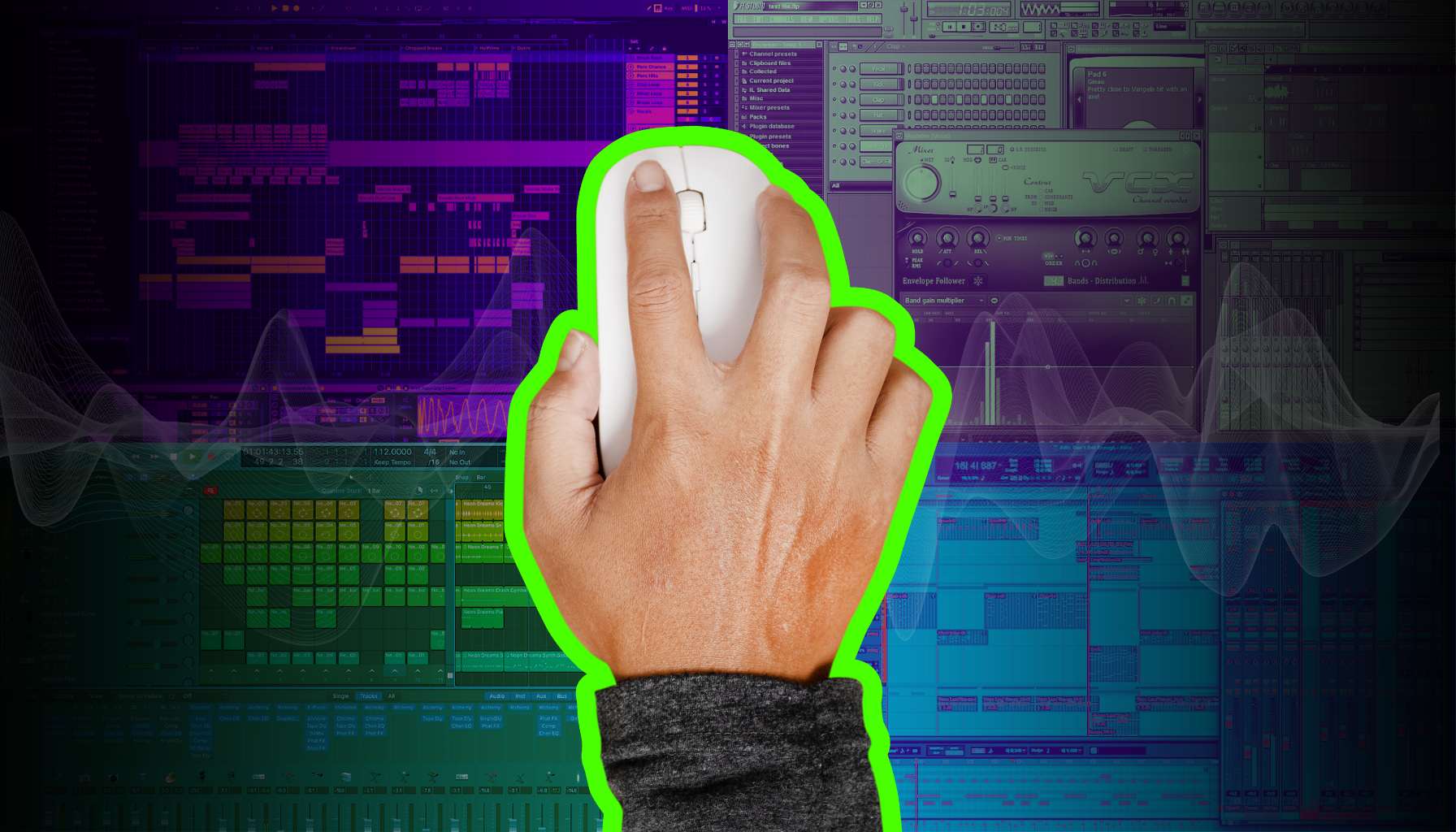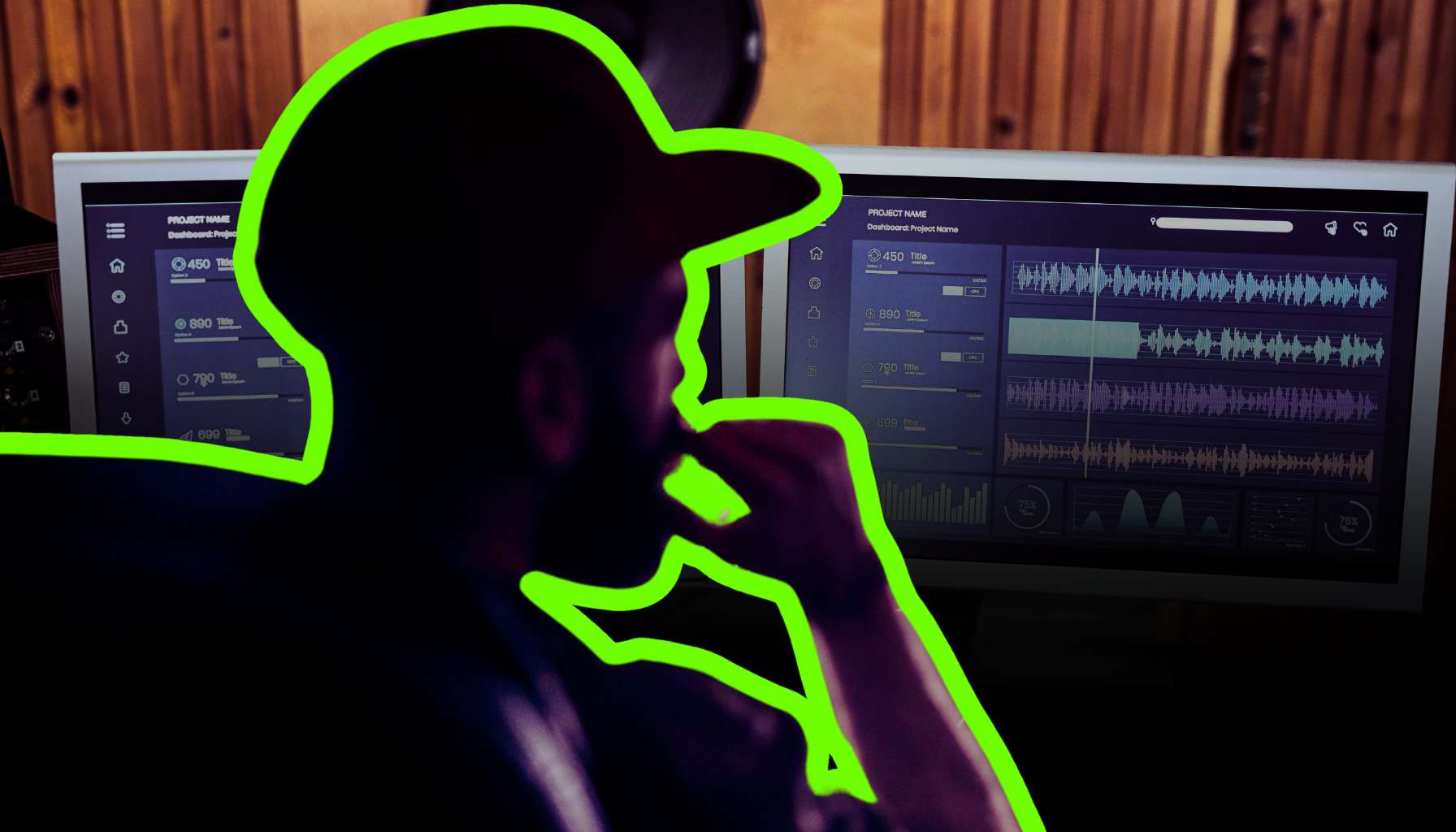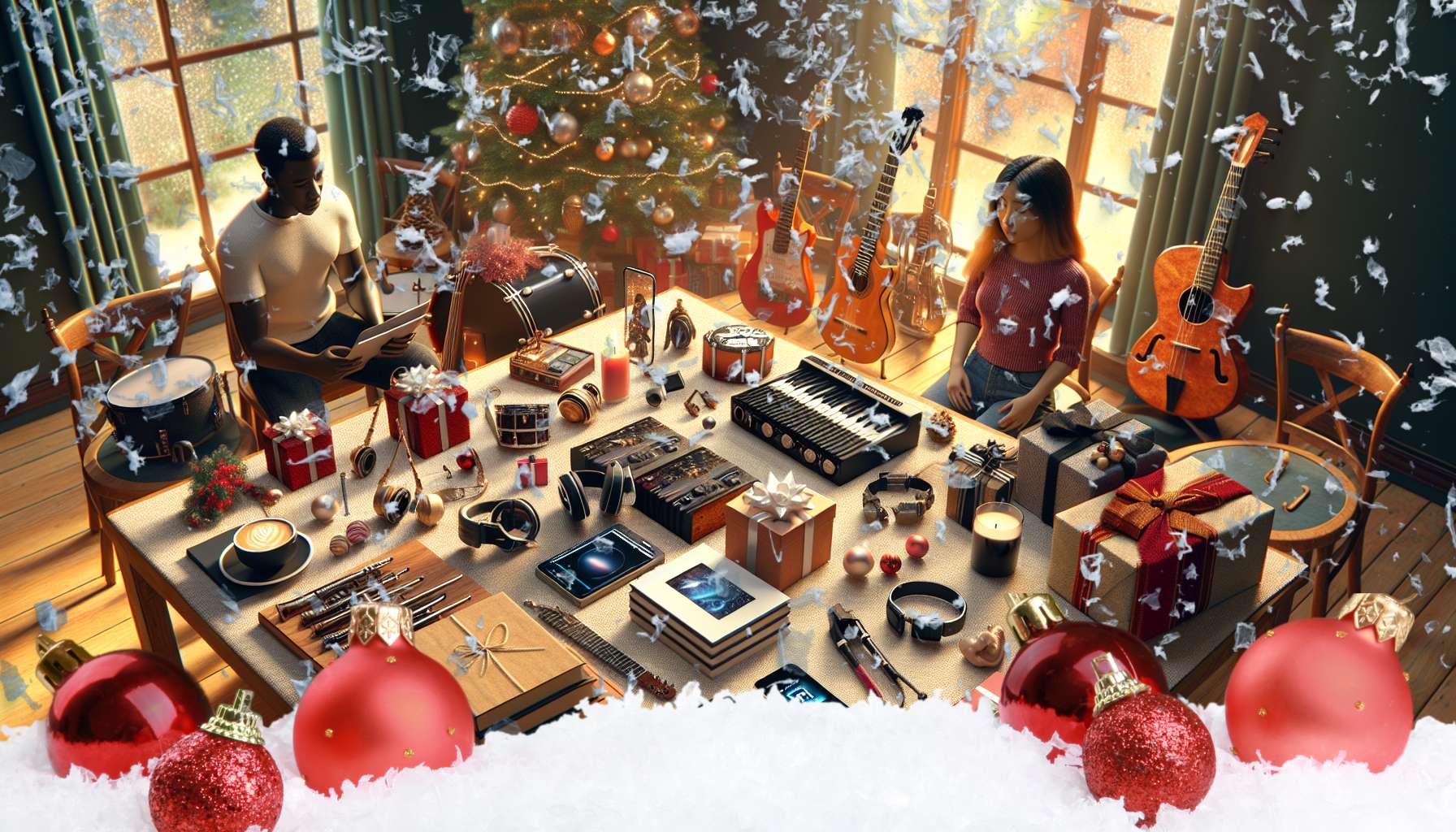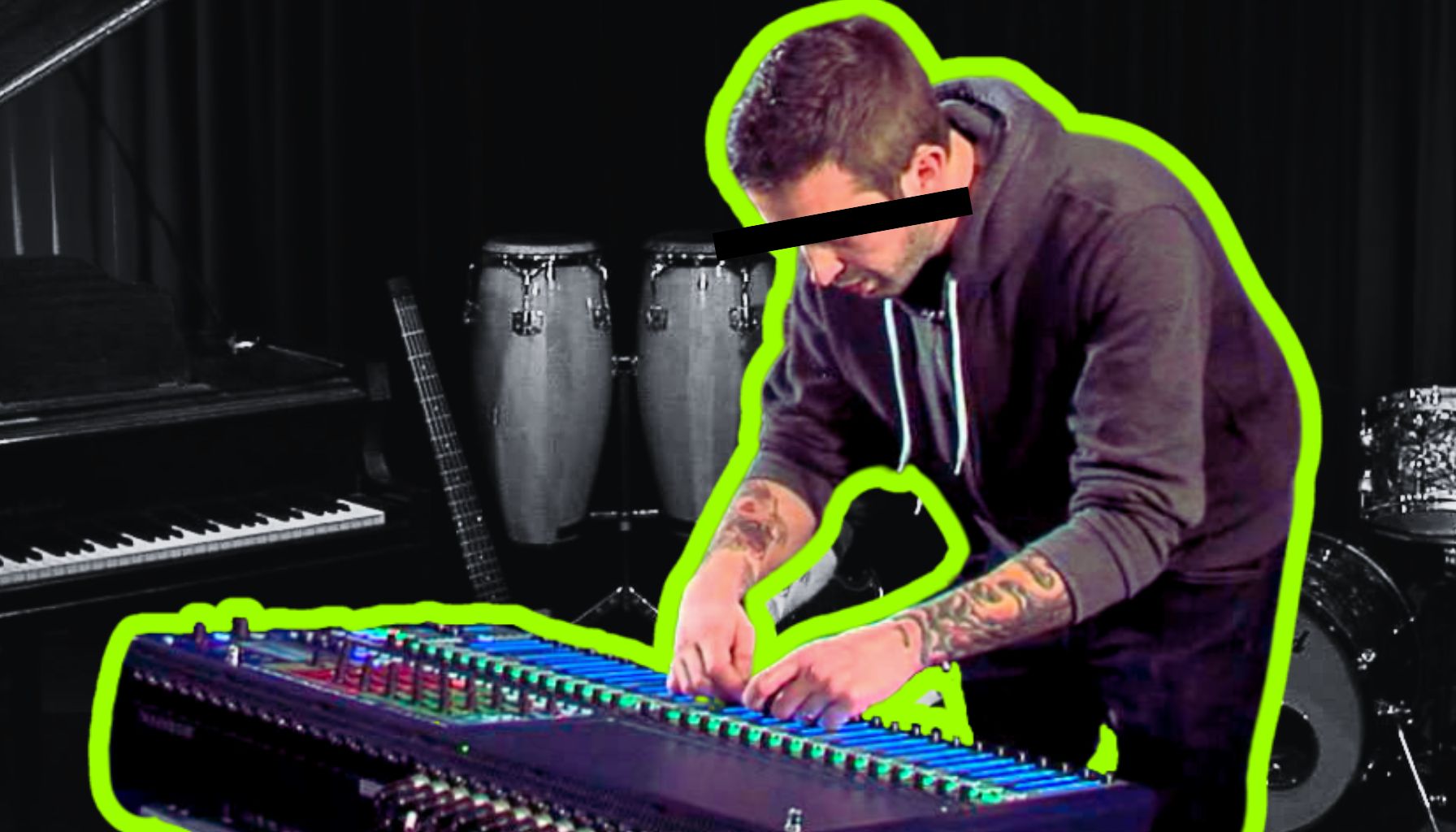Live Music Monitoring: The Unsung Hero of Stellar Performances
Imagine a rock concert without gnarly AF electric guitars – unthinkable, right? Now, picture a live performance without proper audio monitoring. Unthinkable AF. Or at least it should be.
It’s the silent backbone of any gig, ensuring that the music doesn’t just play, but resonates. Whether you’re shredding a solo or crooning a ballad, how you hear yourself on stage can make or break your performance.
Importance of Audio Monitoring for Live Performances
Audio monitoring is the secret sauce to a live show that sizzles. It’s not just about avoiding the cringe-worthy feedback loop; it’s about precision. Musicians need to hear the right mix of instruments and vocals to stay in sync and in tune. Think of it as your audio mirror – it reflects your sound so you can adjust your performance in real-time.
Role of Monitoring in Musicians’ Performances
Good monitoring is like having a conversation with your audience. It lets you connect, react, and engage. Without it, you’re just shooting in the dark, hoping to hit the right notes. With it, you’re in control, confidently steering the crowd through every rise and fall of your musical journey.
Whether you’re a garage band hero or a seasoned touring artist, remember that your monitoring system is as crucial as your instrument. It’s the unsung hero that, when tuned to perfection, can elevate your live music from good to unforgettable.
Types of Monitoring Systems: A Sonic Showdown
When the spotlight hits, and the crowd roars, the last thing you want is to be lost in a sea of muddy sound. Enter stage left: monitoring systems. These sonic sidekicks are pivotal for any live act, but with options like In-Ear Monitors (IEMs), Stage Monitors (Wedges), and Headphones, making the right choice can feel like tuning a guitar in the dark. Let’s shine a light on the contenders, shall we?
In-Ear Monitors (IEMs)
These discreet earpieces are like secret service agents for your ears, offering personalized sound straight to your eardrums. IEMs are the ninjas of the monitoring world, providing a stealthy solution to manage your audio environment without the bulk of traditional monitors.
Stage Monitors (Wedges)
Stage monitors, the trusty wedges that lie at your feet, are the old-school roadies of sound. They blast the mix back at you, allowing you to feel the music’s pulse through the soles of your shoes. They’re the no-frills, workhorse option that has been around since the first guitar was plugged into an amp.
Headphones
And then there’s the headgear for the soloist – headphones. These are for those who need to block out the world and dive deep into their sound, especially useful for drummers caged behind their kits or DJs spinning in a club’s cacophony.
Regardless if you’re gearing up for a coffee shop gig or prepping for a stadium tour, remember that your choice of monitor can be as personal as your lyrics. It’s about finding the right fit for your sound, your stage, and your sanity.
Understanding Stage Monitors
So what about those damn ugly ass speakers? Ok, fine, let’s talk about stage monitors, those bulky boxes you’ve tripped over at least once in your life. They’re like the comfort food of live music – nothing fancy, but oh-so-satisfying. These wedges serve up a feast of sound that lets you hear the mix as the audience does, grounding you in the live music experience.
Function and Positioning on Stage
Stage monitors have one job: to keep you in the loop of your own performance. Positioned at the edge of the stage, angled up at you, they deliver the sound that helps you keep your pitch perfect and your rhythm tight. They’re the trusty sidekick to your superhero act, ensuring you’re always in tune with your bandmates.
Benefits of Using Stage Monitors
There’s a reason these wedges have been around since the first electric guitar was plugged in. They give you that raw, unfiltered live sound that’s as authentic as it gets. Plus, they save you from lugging around extra gear, because let’s face it, no one wants to haul more stuff to a gig.
Drawbacks of Stage Monitors
But it’s not all smooth sailing. Stage monitors can be feedback fiends, squealing at the most inopportune moments. And then there’s the issue of sound bleeding – that moment when your monitors are so loud they start a conversation with the mics. Not exactly the duet you were looking for.
Optimal Use of Stage Monitors
To get the most out of these wedges, it’s all about placement and balance. Angle them just right, and you’ll have a clear line of sound without the feedback drama. Keep the volume in check, and you’ll avoid the sound bleed that can muddy your mix. It’s like finding the sweet spot in your favorite chair – when it’s right, you just know.
You could be the world’s best solo acoustic act or an amateur full-throttle rock band, it doesn’t matter…understanding the ins and outs of stage monitors can mean the difference between a good show and a great one. They may not be high-tech, but they’re high-impact when used correctly. Just watch your step, and you’ll be fine.
Headphones for Live Performance
Headphones in a live setting? You bet. They’re not just for shutting out the world on a crowded bus anymore. In the hands of a DJ, they’re the tools that keep the party pumping. For drummers, they’re the shield against the chaos of cymbals and snares. Let’s dive into the nitty-gritty of using headphones when the stage is your battleground.
Use of Headphones in Live Settings
DJs, with their fingers riding the pulse of the beat, rely on headphones for cueing up the next track without missing a beat. Drummers, those warriors of rhythm, use them to lock into the groove while keeping their hearing intact from the barrage of decibels. In both cases, headphones are the linchpin to a flawless performance.
Pros and Cons of Headphones
Let’s talk turkey. Headphones can deliver studio-quality sound and top-notch noise cancellation, which is a godsend in a noisy venue. But, and it’s a big but, they can be clunky, and that cord can feel like you’re on a leash. Plus, connectivity issues? They can turn a smooth gig into a game of musical hot potato.
Selecting the Right Headphones
Choosing the right headphones is like picking the right guitar pick – it’s all about feel and function. You want durability because gigs can get wild, and comfort for those extended jam sessions. And let’s not forget sound quality; because if you can’t hear the nuances, what’s the point?
Remember that headphones can be your best friend or your worst enemy. It’s all about finding the pair that fits your vibe and your needs. Get it right, and you’ll be the maestro of your live performance, not just another face in the band.
Sound Quality and Fidelity
For the independent musician, sound isn’t just sound—it’s your signature, your soul, your sonic handshake with the audience. So when it comes to live music monitoring, the quality and fidelity of what you hear can make or break your performance. Let’s cut through the noise and focus on what matters: how IEMs, stage monitors, and headphones stack up in the quest for impeccable live sound.
Comparison Across Monitoring Systems
First up, frequency response. Think of it as the range of musical colors you can paint with. IEMs offer a broad palette, letting you hear the deepest bass and the highest treble with clarity. Stage monitors, on the other hand, give you a more ‘what you see is what you get’ experience, often emphasizing the mid-range frequencies that cut through the live mix. Headphones? They’re the studio artists of the bunch, providing a detailed and balanced canvas, but sometimes at the mercy of their own design limitations.
Impact on Performer’s Experience
Now, let’s talk ear fatigue. It’s real, and it’s the nemesis of any long gig or tour. IEMs can be your best friend here, as they’re designed to sit comfortably for hours, reducing the strain on your ears. Stage monitors can be a bit of a wild card, potentially blasting your ears if not managed properly. And headphones, while cushy, can become your own personal sweat lodge after the third encore.
When it comes down to it, the ability to perform at optimal levels is tied to how well you can hear yourself and the band. It’s about more than just volume; it’s about the quality of sound that lets you connect with your instrument, your bandmates, and ultimately, your audience. So choose wisely, because in the end, the fidelity of your monitoring system can either be the wind beneath your wings or an anchor dragging you down.
On-Stage Communication and Interaction
Picture this: you’re on stage, the crowd is buzzing, and you’re about to launch into your killer solo. But wait, can you even hear your bandmates? This is where the rubber meets the road in the world of live music monitoring. Whether you’re plugged into IEMs, wedged behind stage monitors, or cocooned in headphones, your on-stage communication and interaction can be the linchpin of a stellar performance or the wrench in your live set.
IEMs and Communication Challenges
IEMs, those sleek little earpieces, offer sound isolation that’s second to none, but they can also leave you feeling like you’re on an island, cut off from the energy of the crowd and the chemistry of your band. The fix? Ambient microphones that pipe in the roar of the crowd and the vibe of the venue, keeping you connected while still in control of your mix.
Stage Monitors and Interaction Dynamics
Stage monitors, those trusty wedges, keep you tethered to the live sound. They let you feel the music in your bones and stay in sync with your bandmates through natural onstage communication. Visual cues? You’ll catch every nod, every jump, every wild gesticulation. But remember, with great power comes great responsibility—crank them too high, and you’ll be that person, the one who drowns out everyone else.
Headphones and Interaction Limitations
Headphones in a live gig can be a mixed bag. They’re the introverts of the monitoring world, offering partial isolation and a personal bubble of sound. But beware, they can also create visual barriers, making it harder to connect with your audience and band. It’s a delicate dance, finding the balance between immersion in your sound and engagement with the show.
The choice of monitoring system is more than just about sound—it’s about how you connect, communicate, and throw down with your fellow musicians. It’s about making sure that when you’re up there, in the thick of it, you’re not just playing music—you’re living it, together with your band and your audience.
Durability and Maintenance
Rock stars and roadies know it: the show must go on. But what about the gear that makes the show possible? Durability and maintenance of your live music monitoring systems are the unsung heroes that can either keep you basking in the limelight or leave you in the dark with a silent mic. Let’s break down what keeps your IEMs, stage monitors, and headphones not just alive, but kicking.
Lifespan of Different Monitoring Options
Quality gear is like a fine wine—it gets better with age, or it turns to vinegar. IEMs, crafted with precision, can withstand the rigors of the road if treated with respect. Stage monitors, the workhorses, are built tough, but they’re also prone to the occasional stage dive mishap. And headphones? They’re the delicate geniuses of the bunch, offering studio-grade sound but often requiring a gentle touch and a safe space away from the mosh pit.
Maintenance Requirements
Cleaning and storing IEMs is a ritual akin to a samurai caring for their katana. It’s about hygiene and respect—keeping those ear canals clean and your sound pristine. Stage monitors demand a check-up now and then, ensuring they’re free from the dust and debris that can muffle your sound. Headphones, with their intricate components, need a little love too—think cable management and cushion care to avoid the dreaded ‘one-ear’ syndrome.
Whether you’re a solo act or part of a band, the longevity of your monitoring system is crucial. It’s not just about the money; it’s about the music. Because when your gear is in top shape, you’re free to focus on what you do best—delivering those face-melting solos and heart-wrenching ballads that leave the crowd screaming for more.
Portability and Setup
Ever tried to stuff a stage monitor into a hatchback? Not fun. Musicians on the move need gear that can keep up without throwing out a roadie’s back. That’s where portability and setup of your live music monitoring systems become the unsung headliners of your tour. Let’s dive into the nitty-gritty of taking your show on the road without the headaches.
Traveling with Monitoring Systems
Compactness and ease of transport are your besties when you’re hopping from gig to gig. IEMs are the ultimate road warriors—tiny, lightweight, and ready at a moment’s notice. Stage monitors? They’re like that bulky friend who’s always up for a road trip but takes up too much space on the backseat. And headphones, while more portable than monitors, still need a safe spot to avoid the dreaded tangle of doom.
Setting Up at Venues
Now, let’s talk setup. Time is money, and the last thing you want is to fiddle with gear when there’s soundcheck to be done. IEMs are a plug-and-play dream, especially with wireless systems. Stage monitors require a bit more muscle and know-how to get the angles just right. And headphones? Just find that jack and you’re golden—unless you’re dealing with wireless latency or battery life roulette.
Reliability and troubleshooting are part of the gig, like that one song the crowd always requests. Whether it’s a rogue frequency messing with your IEMs, feedback from a stage monitor, or a headphone cable that’s seen better days, being prepared is key. Keep your gear in check, and you’ll keep the show on the road—literally and figuratively.
Cost Implications and Budget Considerations
Let’s talk turkey—or rather, let’s talk tuners, transducers, and the treasure it takes to keep them running. When you’re an independent musician, every penny counts, and the cost implications and budget considerations for your live music monitoring system can hit a high note on your bank statement. It’s not just about the upfront sticker price; it’s the long play that counts.
Pricing of IEMs, Stage Monitors, and Headphones
From the wallet-friendly to the bank-breaking, the market’s got it all. IEMs can range from a modest investment for a universal fit to a sizeable sum for the custom-molded nirvana. Stage monitors don’t skimp on the price tag either, especially if you’re eyeing those that promise to deliver sound as pure as the driven snow.
And headphones? You can snag a pair without breaking the bank, but for those audiophile-grade cans, you might need to sell a kidney—or at least a guitar.
Long-Term Investment and ROI
But it’s not just about coughing up cash for gear. Think ROI—return on investment, baby. Those IEMs might save your hearing, meaning fewer trips to the audiologist and more years doing what you love. A solid stage monitor could mean less strain on your voice, keeping those vocal cords golden for the long haul. And reliable headphones can double as studio gear, giving you more bang for your buck.
Then there are the hidden costs—like that extra XLR cable you forgot or the carry case that’s not included. Accessories and maintenance aren’t just add-ons; they’re essentials. So, before you drop your dough, consider the full score—the initial outlay, the upkeep, and the unseen extras.
After all, a musician’s gotta eat, and ramen only goes so far. Choose wisely, and your monitoring system won’t just be a purchase; it’ll be an investment in your art.
The Future of Live Music Monitoring
Strap in, folks—we’re about to take a ride into the future, where the live music monitoring game is as futuristic as a sci-fi flick. Imagine a world where tangled wires are ancient history, and sound quality is so crisp it’s like Beethoven’s ghost is mixing your tracks. This isn’t just fantasy; it’s the fast-approaching horizon of live music monitoring.
Technological Advancements
Wireless systems are cutting the cord on traditional setups, offering freedom to roam the stage like a caged animal finally let loose. Digital integration is turning complex setups into a tap on a touchscreen, with mix adjustments at the fingertips of even the most tech-averse musicians.
And let’s not forget about the rise of in-ear monitoring technology that’s becoming as common as a drummer with a tattoo sleeve.
Trends and Innovations
Personal monitoring apps are popping up faster than fans at a surprise encore, giving you control over your mix with a swipe on your smartphone. And for the eco-conscious rocker, sustainability is becoming a headliner, with gear crafted to reduce the carbon footprint of your tour bus. It’s not just about sounding good; it’s about doing good, too.
So, what does this mean for you, the independent artist with a sound to share? It means the power is in your hands—literally.
The future of live music monitoring is about customization, convenience, and clarity, ensuring that the only thing you need to worry about is nailing that high note, not whether your monitor mix will be more muddled than a politician’s promise.
Embrace the tech, and you’ll be playing to the back row of the future. Damn skippy.













